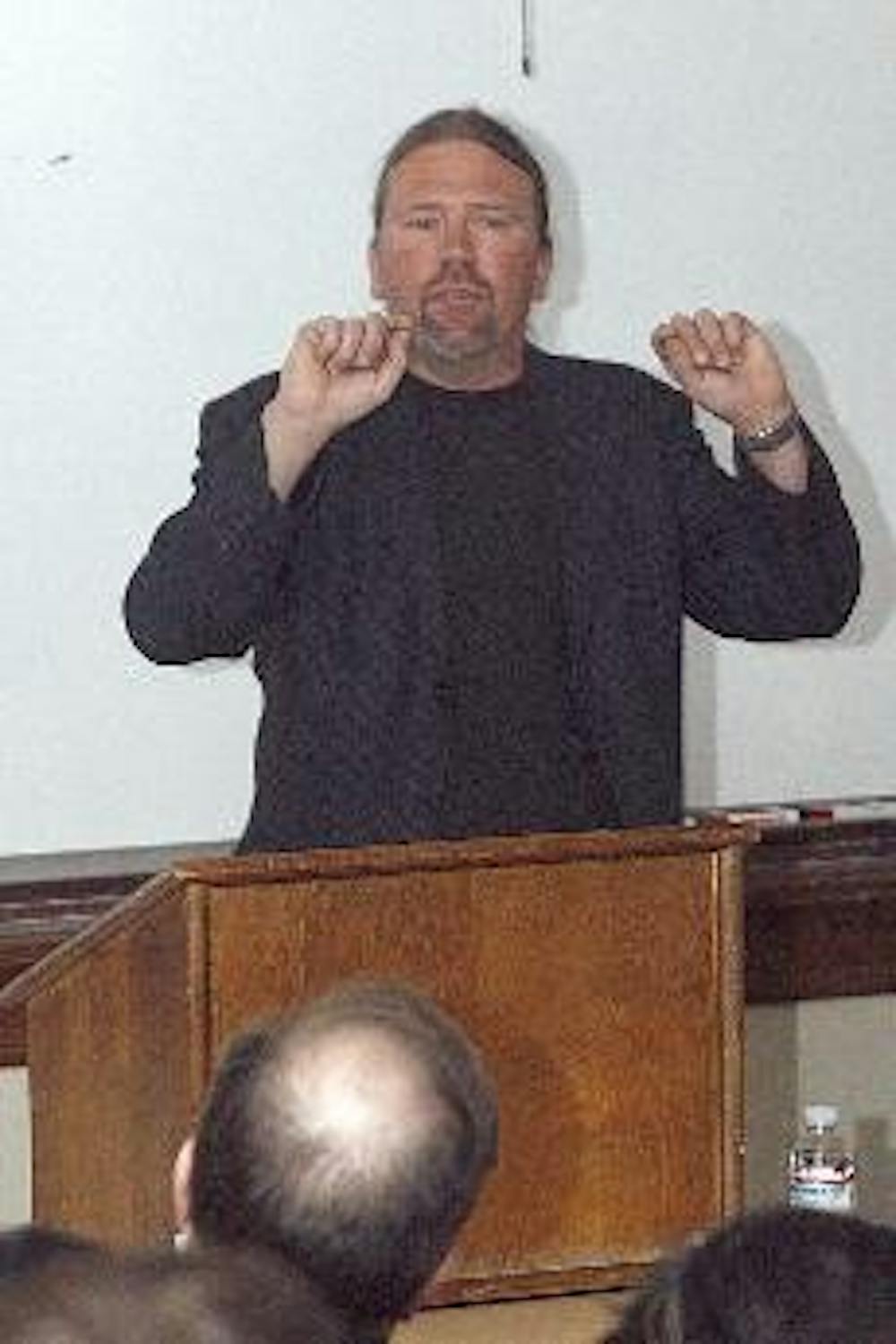
Daniel Schowalter, an assistant professor of communications from Rowan University, addresses the use of traumatic Native American photographs.
Everything is not as it seems. This was a theme of a lecture from Daniel Schowalter, an assistant professor from Rowan University, Thursday evening.
Approximately 75 students, faculty, and other guests attended Schowalter's lecture, "(Re)imagining the American Indianness in the National Museum of the American Indian," in a room at Miami University that was decorated with red, yellow, black, and navy banners on loan from the Miami Nation. The banners displayed messages such as "accepting one another" and "creating an atmosphere of positive engagement."
Schowalter's lecture was meant to address three questions, the first focusing on how North American Indian experiences and identities can be re-imagined and re-articulated within the National Museum of the
American Indian. The second question was to what extent this museum can function as a case study for the complicated relationship between visibility, memory, and trauma; and the third looked at to what extent this case study could provide a theoretical model for visual representations and discussions of traumatic histories.
The lecture began with Schowalter discussing the visibility of American Indian histories - such as through photographs - and the trauma that abused those histories. He said that pictures of American Indians oftentimes do not portray the trauma that existed in real life. He displayed pictures for the audience of American Indians done by artists such as James Earl Frasier's End of the Trail.
"I never though of images of (American) Indians in this way, as not real portrayals of their lives and even the history," said senior Kara White, who attended the lecture for her educational leadership class. "The speech was very unique because he presented ideas that were new to me and probably new to most students."
Schowalter discussed how certain images have become icons of leisure and even casual decorations. These images fail to conjure the sense of trauma in the onlooker so much to the point, Schowalter explained, that people use these images in home items such as expensive kitchen chairs and wall clocks.
Schowalter also spoke about the National Museum of the American Indian that opened in September 2004 in Washington, D.C. He said that hopefully the museum will be able to critique the passiveness that inundates the images of "American Indianness." He said that the museum is about moving into the future and isn't about photographs - rather about technology.
"Don't expect to see dusty old photographs," Schowalter said.
He also said that the museum building itself splits from history and conservative architecture, having a unique and modern look with rolling sides and a lack of symmetry. With no two sides alike, Schowalter suggested the museum represents timelessness. He believes the museum will help American Indians transcend time.
Enjoy what you're reading?
Signup for our newsletter
"The museum ultimately provides a place to re-image American Indians in the 21st century," Schowalter said. "The museum tries to tell those histories in a native voice, which is a useful alternative to what we've had in the past."
When asked if the museum may actually put feelings of trauma back in the photographs, Schowalter said that the point of the museum is the opposite.
"The museum doesn't want to wallow on the genocides of the past," he said.
Schowalter, who is a professor of communication, was brought to Miami by the Center for American and World Cultures, the department of anthropology and the department of communication.




